Reaching for the Stars
- "Reaching for the Stars" originally appeared in the February 2025 "Passion Project" issue of COMO Magazine.
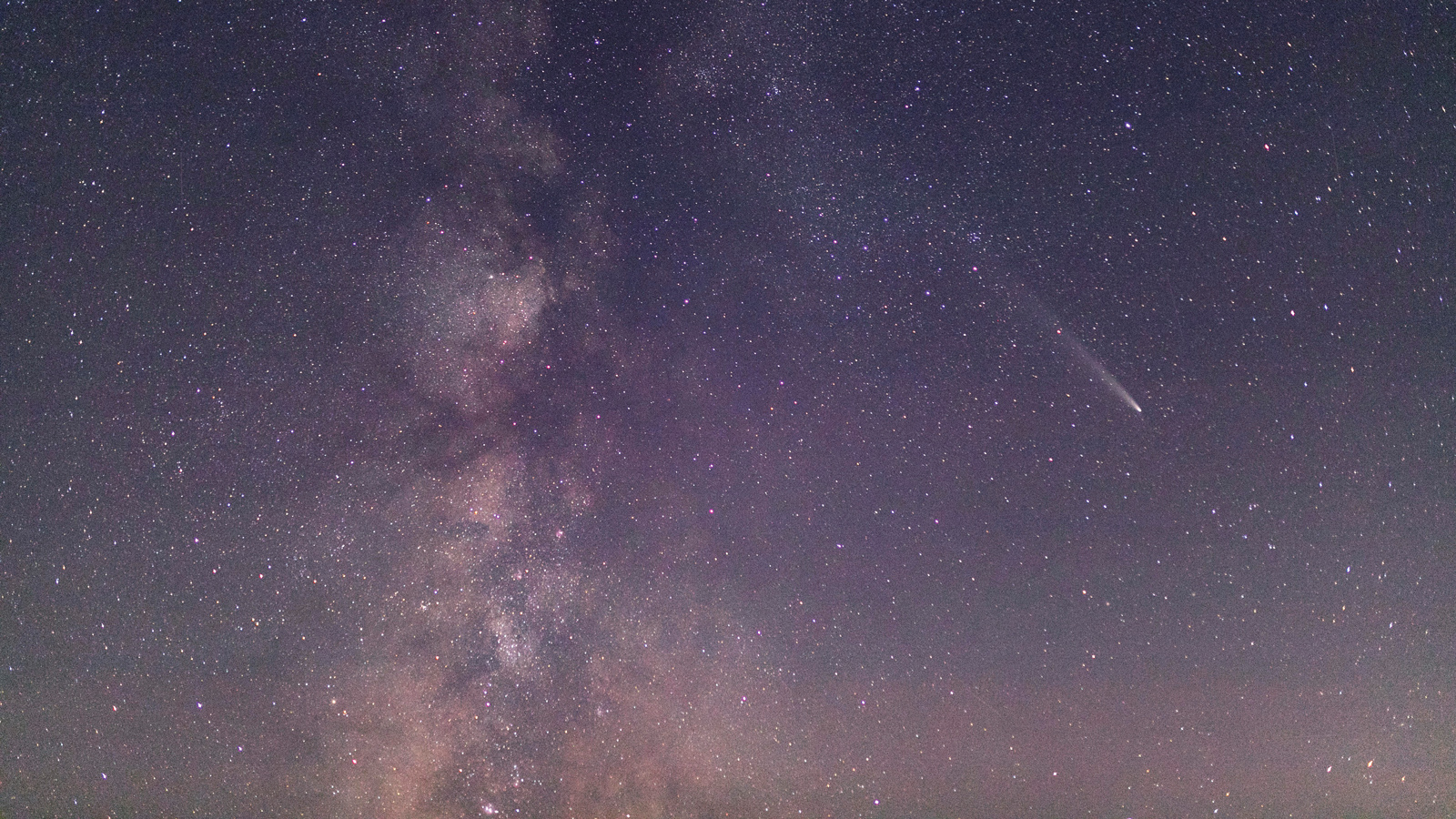
Admiring the night skies is a tradition as old as time. Check out some of the coming year’s celestial happenings and maybe find your new favorite hobby.
The night sky has shone over humans for all of existence. Its vast mysteries blanket the earth each night, inspiring generations to look up. Stars, planets, galaxies, and meteors light up the sky night after night, as it has been for millennia.
“Astronomy lends itself to looking at a long view. You realize pretty quickly that 1000 years is nothing when you’re talking about planetary movements,” Val Germann, Volunteer Assistant for Laws Observatory on MU, explained. “The universe will go along quite well with or without us. It kind of sobers you, it’s a very interesting and beautiful thing.”
Germann has been working at Laws Observatory on and off over the last four decades, and looking up at the night skies for over 50 years. He can remember the first time he and his brother, Farrell, tried to catch a comet in their early teens.
“We tried to find this comet, and we started out using a rifle scope that my dad had as a telescope,” Germann recalled while laughing a bit.
The two boys missed the comet because the information they got from a Kansas City newspaper was incorrect. But even with the misprinted and makeshift gear, Germann was hooked. Germann and his brother saved up to buy a telescope and both have lifelong interest in celestial happenings.
“We bought a telescope in like ’64 or something like that, and started looking at the moon and planets and have both been doing it ever since,” he continued. “My brother lives in Jefferson City now, and he’s an astrophotographer, so we’re still doing the crazy stuff sixty years later.”
Paul Temple, the director of Morrison Observatory and Professor of Astronomy in Fayette at Central Methodist University, had his interest in the night skies solidified at a young age as well.
“I started when I was five years old, and I’m 70 now,” Temple said about his introduction to keeping his eyes on the sky above, which turned into a lifelong passion as well as a career. “I was one of the weird kids whose mom would always let me stay home from school to watch the Mercury, Gemini, and Apollo missions. She always said I’d get a lot more education that way than going to school, and she was right.”
Modern Stargazing
These days, with access to the internet, one can find incredibly accurate information in just a few clicks! There are even apps for smartphones that can help you identify what you are seeing in the sky.
“The phones are cool because you calibrate your phone by shaking it,” Temple excitedly shared. “And then when you put it up to the sky and point it at a region of the sky, it’ll show you what objects are in that region of the sky and identify them.”
Temple recommends Stellarium and Cartes du Ciel for PCs. Germann recommends StarWalk for iPhones.
You don’t need fancy equipment or highly technical training to start looking at the night sky. All it takes is some curiosity, a little determination, a clear night and an area away from lights. Finding the right spot is key.
“You’d like to be in a place where the nearest tree line or structure is 100 yards away, like a backyard of someone who’s a little out of town,” Germann explained.
Locating a nice dark spot next to the growing hub that is Columbia is getting harder and harder with light pollution, according to Germann.
Luckily for those in the mid-Missouri area, Columbia Public School’s Planetarium is open to the public on the second Saturday of each month.
“Planetariums usually have the darkest skies around if you live in a big city,” Meaghann Stoelting, planetarium director for Columbia Public Schools Planetarium, explained. “They always have perfectly clear skies. In reality, weather and light pollution make stargazing more difficult.”
Columbia’s Newest Observatory
As the world changes, the night skies remain as beautiful and fascinating as ever. Germann shared that this first half of 2025 will include a variety of stunning opportunities to see the planets. To keep up with this changing world, a new observatory is being added to the Boone County Nature School campus on the south side of Columbia.
“It’s a new facility just opened, but three months ago. It’s still sort of getting set up,” Germann said. “But we’re going to be operating there in early March, early April and May.”
There will be a big STEM event for families and community members at the new observatory on April 5. More details will be announced closer to the date.
Your Gateway to the Stars
Are you craving more of the night skies but you’re not a huge fan of standing out in the elements? Check out mid-Missouri’s celestial exploration centers.
- What is an observatory? An observatory is a large, usually dome shaped building that is used to observe and record natural phenomena. In this case, they contain large telescopes used to view celestial events like comets and planet alignments.
- What is a planetarium? A planetarium is more of a theater, also in a dome shape. Planetariums became popular during the space race as a way to educate children about space. They screen footage rather than viewing it live.
Laws Observatory
The observatory on University of Missouri’s campus was the first U.S. observatory west of the Mississippi River. On Dec. 30, 1852, the Board of Curators proclaimed the building “intended solely for astronomical purposes, [and] will commence an important era in the teaching of the Starry Science in Missouri.” It is still used for research by Mizzou students to this day.
- Observe planets and the Moon with a telescope
- Observation deck with a variety of manual telescopes as well.
- Exhibit featuring various space artifacts from NASA missions
- Free & open to the public on Wednesday nights from 8-10pm (weather permitting), except holidays.
Morrison Observatory
Morrison Observatory was built in 1876 in Glasgow, MO. It moved to Fayette in 1935 where it came under the care of Central Methodist University. Morrison Observatory used to sell times to the railroads, playing an important role in Western Expansion. Today, the observatory is used for the teaching rather than research.
- Observe planets, the Moon, and stars
- Free & open to the public on select Thursdays (call for most up-to-date information)
Columbia Public Schools Planetarium
The CPS Planetarium was built in the 1970s as a part of Rock Bridge High school. In its 50-odd years, it has served thousands of students and community members looking to learn more about the night skies.
- 3 back to back shows, a mix of educational films about space and footage from various telescopes and space missions.
- Free & open to the public on the second Saturday of every month
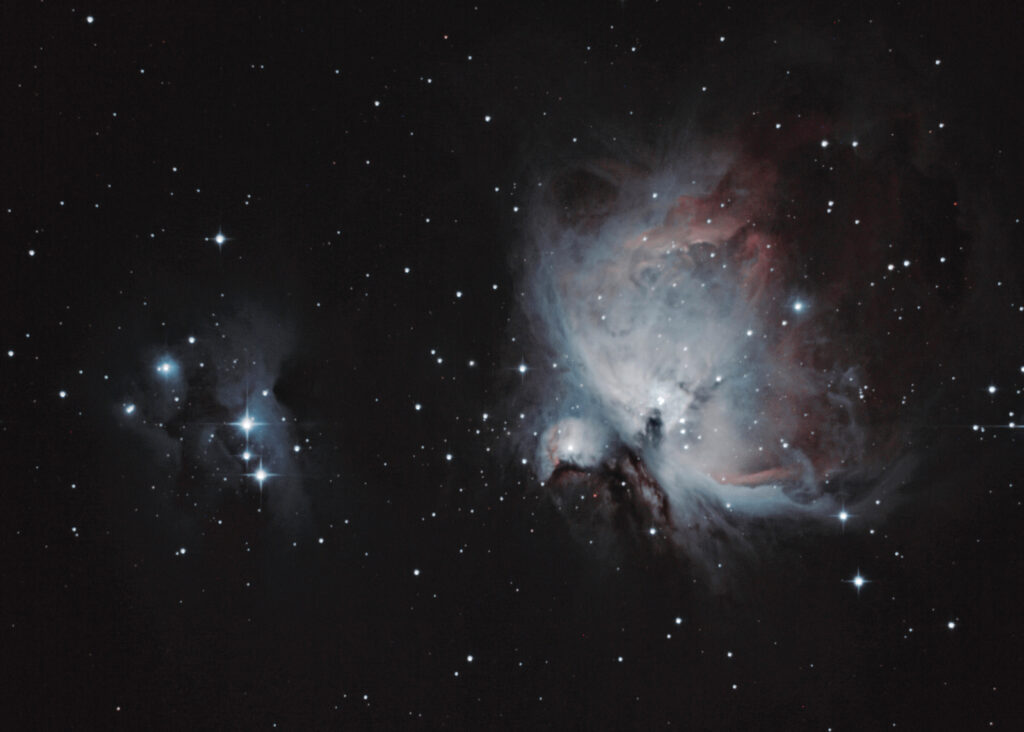
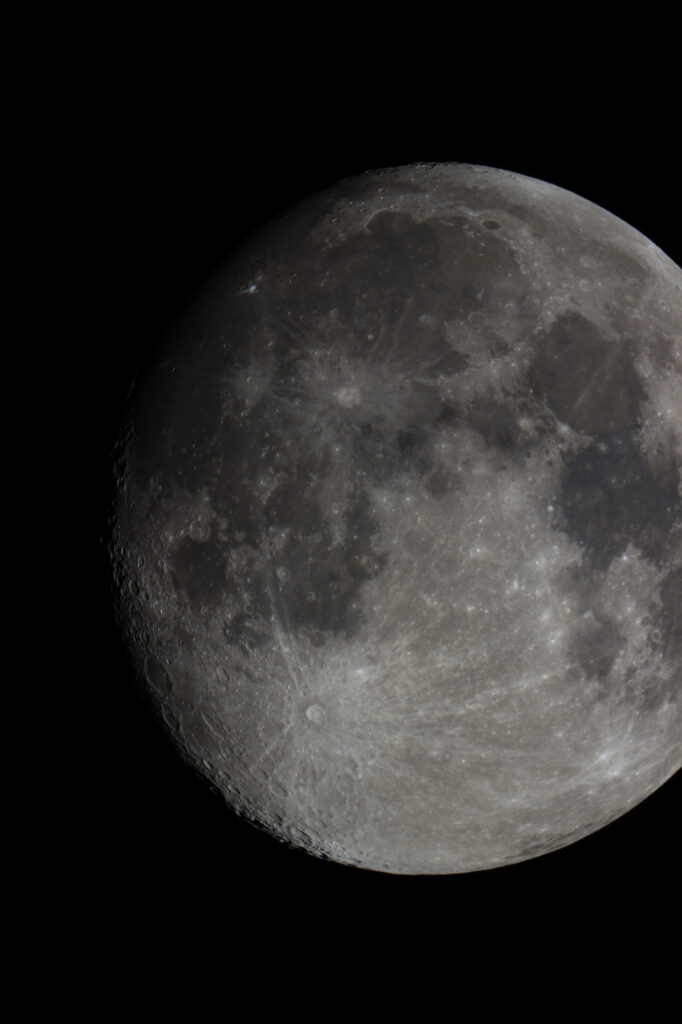
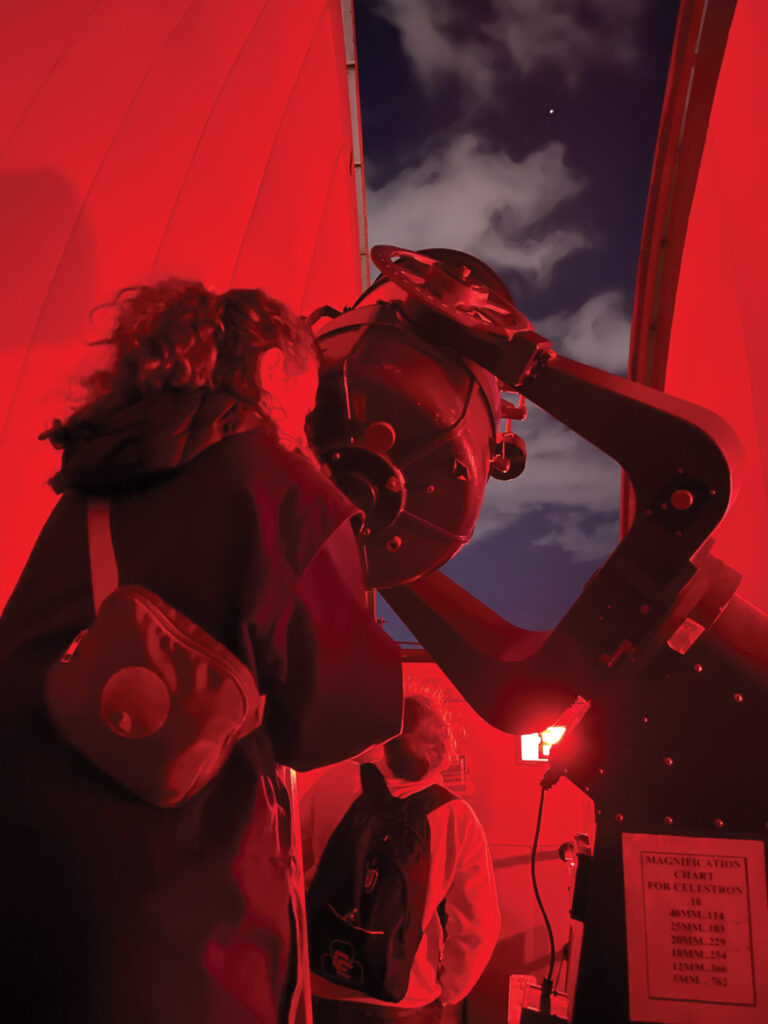
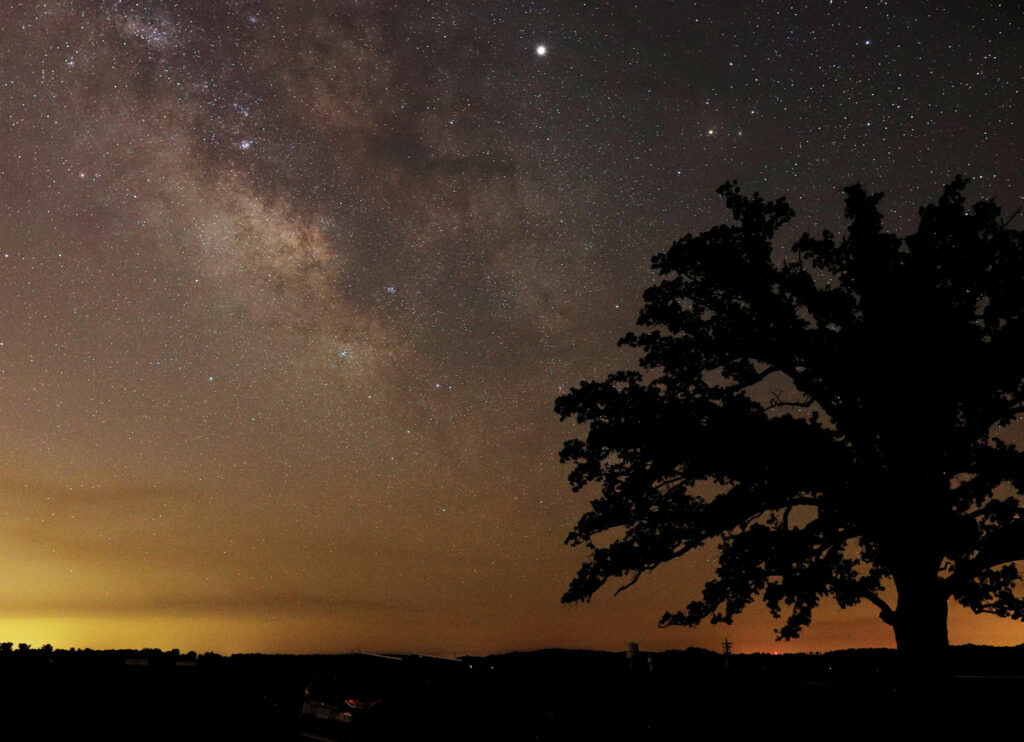
Photos by Val Germann
Val Germann’s Celestial Events to Note for 2025
The Month of January
- The Winter Hexagon prominent in the east, with Mars and Jupiter added.
January 16
- Mars will be closest to Earth for the year, shining its brightest in the east.
- Venus at its best for the year, located in the southwest.
March 8
- Mercury’s best showing for 2025, visible to the southwest with Venus.
March 14
- A total lunar eclipse that will best be seen here in North America.
March 20
- Saturn’s rings edge-on, this will appear as just a thin line in the telescope. This only happens every fifteen years.
September 21
- Saturn closest to the Earth for 2025, the rings coming back.
October 7
- Biggest and brightest Full Moon of 2025.
November 17
- The Leonid meteor shower during a phase without much Moonlight to interfere.
- Meteors will be visible late at night, in the east.
December 13
- The Geminid meteor shower during a phase without much Moonlight to interfere.
- Meteors will be visible late at night, in the east.
Exploring the Cosmos Around COMO
Close to Town
- Cosmo Park: Open until 10pm
- Rock Bridge State Park: Open until 10pm
- Northeast Regional Park: Open until 11pm
- Burr Oak Tree: Open all night (Do not park under the tree)
A Little Further (but worth the adventure)
- Finger Lakes State Park: 20 minutes north of town (Camping available)
- Arrow Rock State Park: 45 minutes west of town (Camping available)
DarkSky Missouri Park
DarkSky Missouri is the Missouri focused division of DarkSky International. Both operate under the same mission of reducing light pollution and preserving the night sky.
- Thousand Hills State Park: Kirksville, 1.5 hours away (Designated Urban Night Sky Place in November 2024)
- Stacy Park: Olivette, 2 hours away (Designated Urban Night Sky Place in October 2021)



